The drought in California, which was officially declared an emergency by Governor Jerry Brown a few weeks ago, has definitely taken its toll on my garden this winter. What’s usually filled with hefty vegetables and verdant vines is a plot of seedlings struggling to get started and a trellis of peas barely hanging on in our unseasonal heat (six weeks running with no rain in sight).
But while the winter garden may already be on its way out, I can always count on my citrus trees (some of them over 30 years old) to bear the most beautiful bounties this time of year… like this lemon tree.
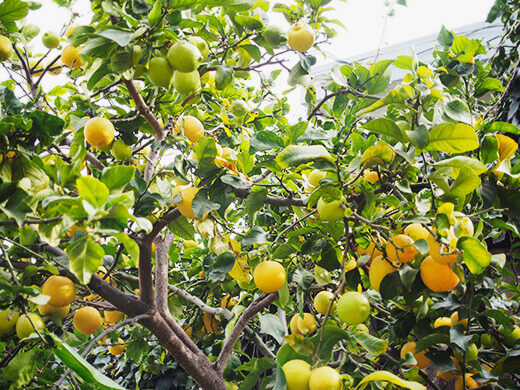
Or this orange tree.
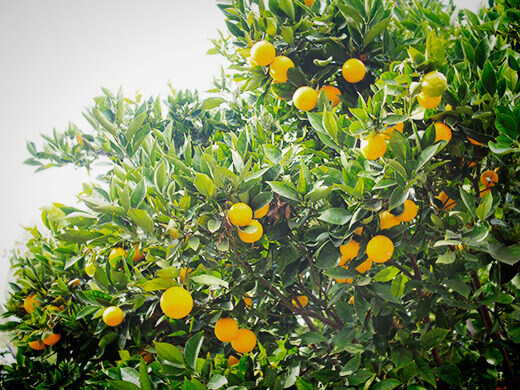
Or these grapefruits, mandarins, and limes.
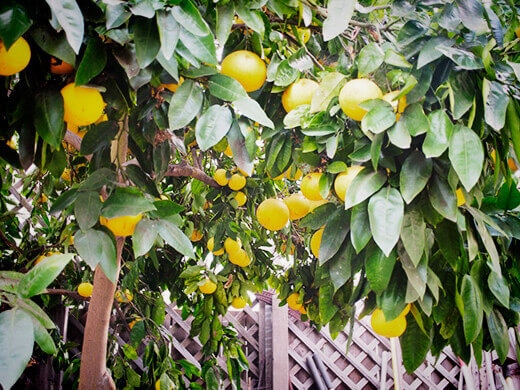
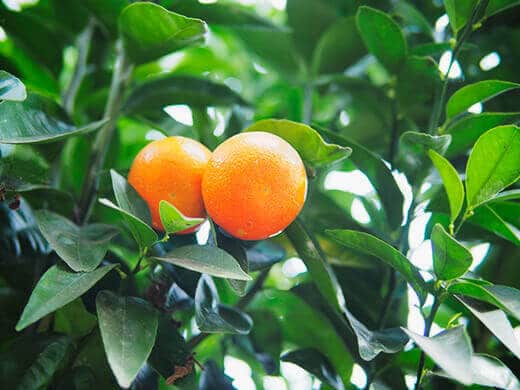
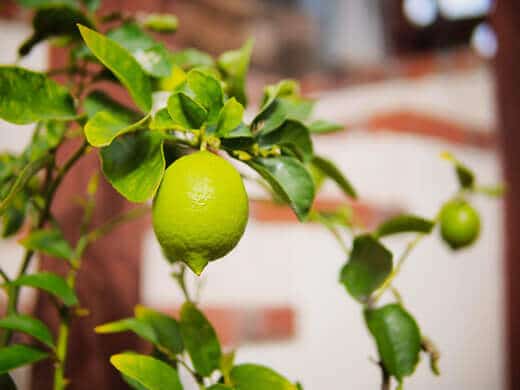
They’re everywhere, and gloriously so. It looks like the lemon tree shook itself out in my kitchen with bowls of Eureka fruits spilling over. Our Valencia oranges are heaped so heavily into the hanging baskets that I’m afraid they’ll come tumbling down. Then there are Oro Blanco grapefruits piled high in the sink and waiting to be juiced, handfuls of mandarins scattered across the counter for easy snacking, and little limes perched on plates to accompany homemade tacos.
Citrus gets a lot of use in our kitchen, from zesting and juicing to marinating and brining. Sometimes we do all of that at once; we’ll zest the fruit before we juice it, then use the juice for a marinade or brine. With any leftover zest that doesn’t go into the meal, I’ll make a citrus salt — a flaky finishing salt infused with citrus zest.
It’s marvelous how a spoonful of zest can elevate something as simple as kosher salt — typically used for rubbing or seasoning — into a fine finishing salt. Sprinkled over peas and fava beans, it livens up that subtle taste of spring. On top of roasted beets and carrots, it adds crunch and kick to those earthy flavors.
How about orange salt on homemade salted caramels? Or lemon salt on thick-cut slices of heirloom tomatoes? Or lime salt to line a roasting pan for fish? Or grapefruit salt to rim the glass of a Salty Dog? You can even make blended citrus salts (perhaps a citron-tangerine?) to finish a plate of grilled asparagus or dry rub a slab of steak.
I use kosher salt in this recipe, but any coarse salt will do. Try it with Maldon sea salt, Himalayan pink salt, or another flaky finishing salt if that’s what you have.
Homemade Citrus Salt
Makes 1/4 cup
Ingredients
1/4 cup kosher salt
1/2 tablespoon citrus zest
Making Your Homemade Citrus Salt
In a small bowl, combine the salt and zest. Reach in there and really squeeze and stir it up well with your fingers; this serves to not only release all the fragrant oils from the zest, but also separate clumps of wet zest so they’re dispersed more evenly in the salt.
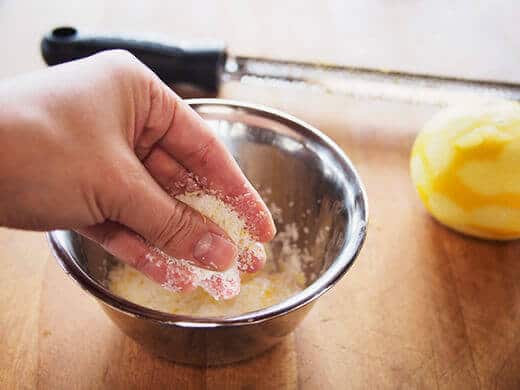
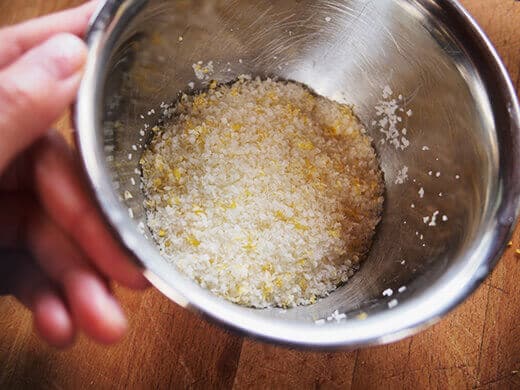
Spread the citrus salt across a shallow dish or baking sheet. Let it air dry for at least eight hours, or overnight. The zest should feel flaky and crumbly between your fingers when it’s fully dried.
If you’re making a few different kinds of citrus salt, you can spread them across a baking sheet on individual sheets of parchment. The parchment will make it easier to scoop all the salt off afterward.
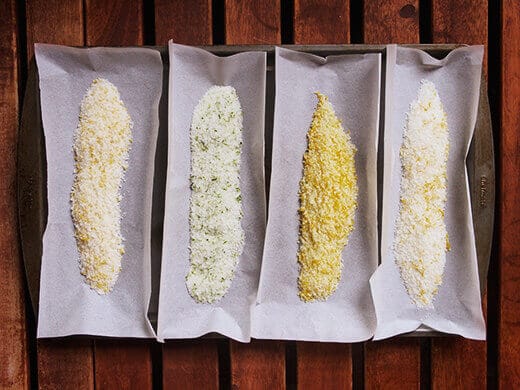
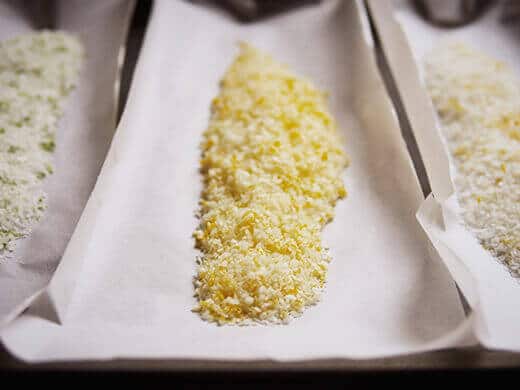
To bottle it up right away, you can speed up the drying process by heating the citrus salt in a 225°F oven for about one hour.
Citrus salt will keep for a few months at room temperature. Storage in an airtight container will prolong shelf life. The zest may fade in color over time, but it won’t affect the taste.
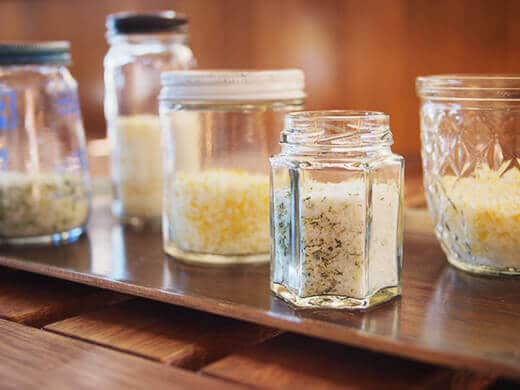
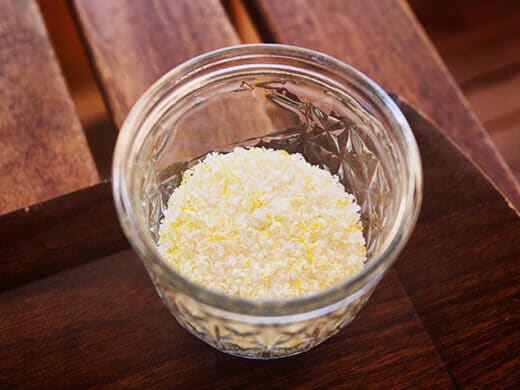
Homemade Citrus Salt
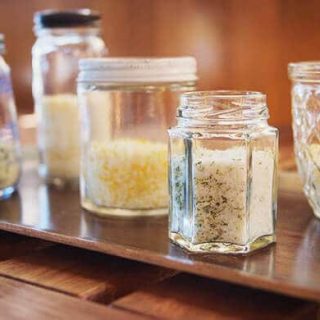
It’s marvelous how a spoonful of zest can elevate something as simple as kosher salt — typically used for rubbing or seasoning — into a fine finishing salt. Sprinkled over peas and fava beans, it livens up that subtle taste of spring. On top of roasted beets and carrots, it adds crunch and kick to those earthy flavors.
Ingredients
- 1/4 cup kosher salt
- 1/2 tablespoon citrus zest
Instructions
- In a small bowl, combine the salt and zest. Reach in there and really squeeze and stir it up well with your fingers; this serves to not only release all the fragrant oils from the zest, but also separate clumps of wet zest so they’re dispersed more evenly in the salt.
- Spread the citrus salt across a shallow dish or baking sheet. Let it air dry for at least eight hours, or overnight. The zest should feel flaky and crumbly between your fingers when it’s fully dried.
- If you’re making a few different kinds of citrus salt, you can spread them across a baking sheet on individual sheets of parchment. The parchment will make it easier to scoop all the salt off afterward.
- To bottle it up right away, you can speed up the drying process by heating the citrus salt in a 225°F oven for about one hour.
- Citrus salt will keep for a few months at room temperature. Storage in an airtight container will prolong shelf life. The zest may fade in color over time, but it won’t affect the taste.
Recommended Products
As an Amazon Associate and member of other affiliate programs, I earn from qualifying purchases.
-
Calphalon Baking Sheets, Nonstick Baking Pans Set for Cookies and Cakes, 12 x 17 in, Set of 2, Silver
-
Baking Parchment Paper 15 in x 200 ft, [250 Sq.Ft] Non-Stick Parchment Paper Roll for Baking & Cooking - Kraft
-
12Pack Mason Jars 8oz with Airtight Lids and Bands - Regular Mouth Glass Canning Jars, Small Half Pint Mason Jars for Preserving, Pickling, Honey, Jam, Jelly, Kitchen Spice jars, DIY Gift


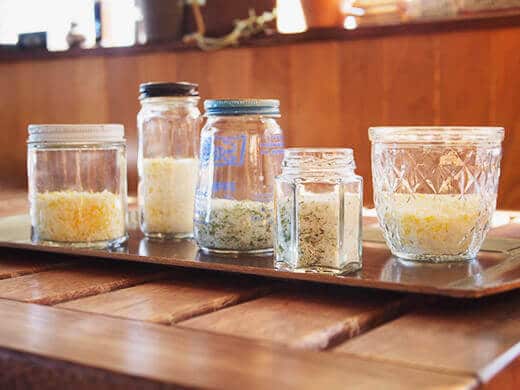

![Homemade Citrus Salt 14 Baking Parchment Paper 15 in x 200 ft, [250 Sq.Ft] Non-Stick Parchment Paper Roll for Baking & Cooking - Kraft](https://m.media-amazon.com/images/I/41+gUWeEt2L._SL500_.jpg)














Salt is a preservative, so citrus salt can’t go bad unless you introduce bacteria through dirty utensils or dirty fingers, etc.
This might seem silly, but how do you know when the citrus salt has gone bad?
—
desksanddesign.wordpress.com
WOW! This looks amazing. I do miss the lemon tree behind my Mom’s old house in California. It always produced the most beautiful, huge lemons.
California lemon trees are pretty amazing. Ours bears fruit year-round!
Super idea–thanks for sharing. I can’t wait to create my citrus salts and enjoy the smell in my nest–Happy Nesting!
If you have variety of citrus in your garden, make these zesty spices for your kitchen. Homemade Citrus Salt http://t.co/ObTbqBMq7G #recipe
An easy #recipe for all the fragrant citrus growing in your garden this season. Homemade Citrus Salt http://t.co/JUd16uazZw #gardenchat
This would be good with fresh ground pepper too. Imaging lemon pepper sprinkled over crab legs or shrimp!
Great idea! We often make a lime juice, salt and pepper dipping sauce for crab, so you could even mix both with the zest.
Try a sprinkle of lemon salt on heirloom tomatoes, or lime salt on fish. Homemade Citrus Salt http://t.co/Fi22hpHN8C #recipe
RT @theGardenBetty: Swimming in citrus this season? Make this before you juice it all! Homemade Citrus Salt http://t.co/uTsF6wLZig #gardenc…
RT @theGardenBetty: Swimming in citrus this season? Make this before you juice it all! Homemade Citrus Salt http://t.co/uTsF6wLZig #gardenc…
RT @theGardenBetty: Swimming in citrus this season? Make this before you juice it all! Homemade Citrus Salt http://t.co/uTsF6wLZig #gardenc…
It’s marvelous how a spoonful of zest can elevate something as simple as kosher salt. Homemade Citrus Salt http://t.co/KHBSFKR2ra #recipe
Barbara Hamilton liked this on Facebook.
Swimming in citrus this season? Make this before you juice it all! Homemade Citrus Salt http://t.co/uTsF6wLZig #gardenchat #recipe
Randall S. Winkler liked this on Facebook.
Steve Elias liked this on Facebook.
Charlie Bourgeois liked this on Facebook.
Diana Heffernan-Schrader liked this on Facebook.
A taste of #CitrusLove
“@BG_garden: Homemade Citrus Salt: http://t.co/MKNdpsYI6B”
Katie Boué liked this on Facebook.
Homemade Citrus Salt:
The drought in California, which was officially declared an emergency by Governor Jerry… http://t.co/wVJbgkune8
Blogged on Garden Betty: Homemade Citrus Salt http://t.co/VADo6tCGzY